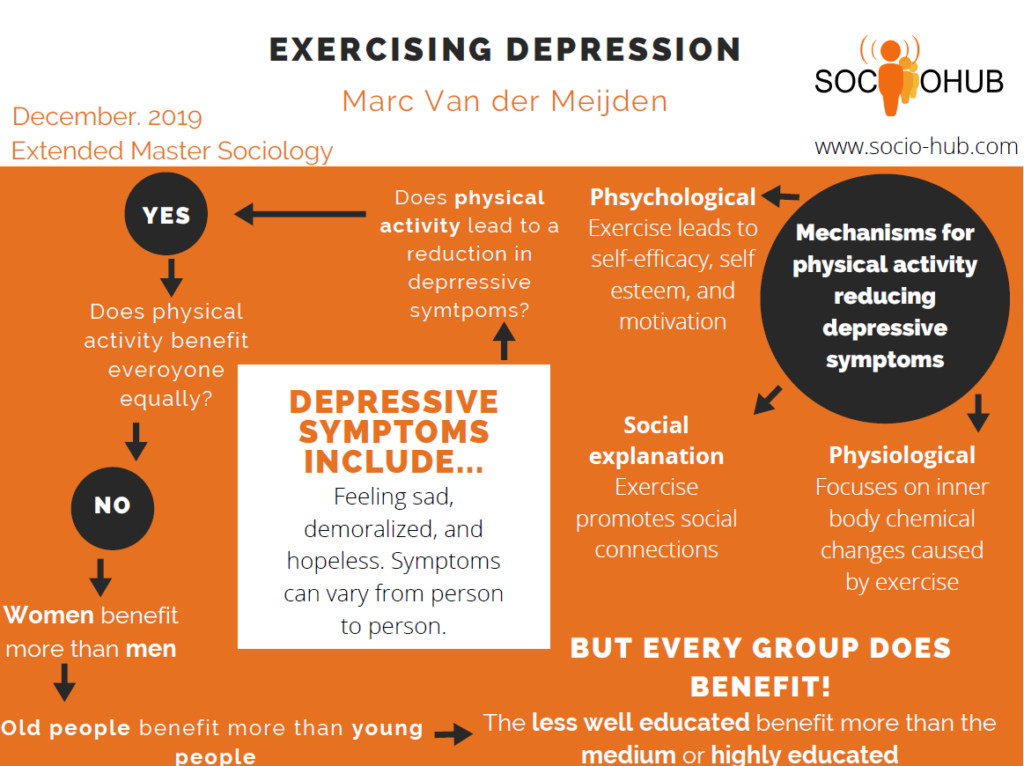There is a disease whose symptoms are present in most people at some time during their life. This disease usually infects its host in adolescence or early adulthood, but can effect anyone. You almost certainly know someone suffering from its effects. This disease is called depression, and even if you don’t know all its symptoms, you likely know the big one; sadness.
This intense sadness can remove hope, self-worth, desire to live, and the ability to sleep. It demoralizes to the point of disabling, and is the largest contributor to global disability, with 7% of the world experiencing it in 2015. It can turn each day into an endurance test, and stretch every minute of that day. It can make people anti-social, isolating them with their disease. Worse, this sadness kills. Eight hundred thousand people are reported to kill themselves every year; many more will go unreported or attempt suicide.
For this reason cures to depression and its symptoms are valuable and endlessly researched. Medication, psychotherapy and electroconvulsive therapy (ECT) have all been offered as solutions, and help millions of people every year. However, there is a cure to many depressive symptoms which is less invasive than medication or ECT, and is available to more people than psychotherapy. This cure is exercise. Perhaps because it is free, widely available, and creates its own momentum and positive feedback, exercise has received less research than costlier remedies to this chronic condition.
Physical activity simply involves an activity which uses more energy than your resting body. For something so universal, what is a healthy amount of exercise is still a question with many answers, and different countries have very different responses. The WHO states that 150 minutes of exercise for an adult in a week is necessary, but the Netherlands for one argues that this is incorrectly quantified, and that any amount of physical activity is of benefit to people. Others insist that bouts of exercise need to be at least ten minutes long to attain health benefits.
Men, Women, Old and Young
One issue which has been proven is the connection between physical activity and less depression, though not precisely why. Some theorists are even unsure of which causes which; perhaps people exercise more as they become less depressed? But most agree that the likeliest explanation is exercise causing one’s depressive symptoms to weaken. Reasons for this include social causes (people often form social connections through physical activities and sports clubs), psychological (exercise raises one’s self-esteem and motivation, lowering depression and opening more time and energy for exercise or other productive activities), and physiological (exercise causes endorphin levels to rise, which inhibits signals of pain and amplifies positive feeling). Most likely it is a mix of the three, which reinforce each other as exercise habits become engrained.
So the focus of this article is not on if physical activity decreases depressive symptoms (as it definitively does), but does physical activity effect the depressive symptoms of different groups differently. Men and women, old and young, rural and urban, those with different educations; do any of these groups benefit more from physical activity? What about different countries?
It turns out that the majority of these groups’ depressive symptoms are effected differently by physical activity. Women benefit more than men, old people benefit more than the young, and those with lower levels of education benefit more than those with higher levels of education. Those in rural and urban areas show little difference, and the differences between countries are evident, but obscure and complex. However, for the other groups we can understand why these differences occur, and make further conclusions on how physical activity effects depression.
For women, the chance of being depressed is higher than for men. One explanation for this is that women’s hormones cause them to fluctuate more emotionally. A separate, non-mutually exclusive explanation is that the social construction of gender leads to gendered ‘normal’ behaviors, which can have interesting effects on people. Traditionally, women would take care of the home, reducing their leisure time activity, and even in modern western societies women still work more and play less. This means men get to be more physically active. Whether it is biological, social, or both, women will prize leisure time more and are more likely to reduce their depressive symptoms through exercise.
This plays out in the evidence. Examining the seventh wave of the European Social Survey (ESS), it becomes clear that women benefit more than men when performing moderate exercise (30-120 minutes a week) or intense exercise (150 minutes or above). The overall effect of intense exercise is 36 percent bigger for women, and moderate exercise is 150% more effective for women than men.
Though elderly people suffer less depression than middle aged people, they suffer worse depressive symptoms. As such, this is a group which is helped more than any other by physical activity. As well as the regular connections between physical activity and depression, old people also benefit further from exercise preventing disease, maintaining physical capacity, and widening their social circle. Simply, they have more to gain from exercising than the young.
We could save hundreds of thousands of people a year.
This is also borne out by an examination of the ESS. Generally, older people who do not exercise at least moderately are depressed at similar levels to other age groups, but older people who do exercise are significantly less depressed than younger groups. As people get younger in age, exercise becomes less effective at reducing depressive symptoms, likely because of the extra benefits mentioned above.
For those with different levels of education, the amount of exercise effects them in interesting ways. The higher educated benefit most proportionally from intense exercise, but the lower educated benefit most from moderate exercise. But overall, more education seems to weaken exercise’s ability to lessen depressive symptoms.
A Fit World
These results are important for a variety of reasons. Clearly, anything which alleviates depression is of great importance. For further research into the effects of exercise on groups and their level of depression, the findings here are an important aid. As depression manifests itself physically, psychologically, and emotionally, any group with higher levels of depression is more vulnerable in all these areas. Any group which suffers more from depressive symptoms will be debilitated to an extent. Without addressing different levels of depression, social equality is impossible.
As exercise especially helps women, the elderly, and the lower educated, these groups should be the focus of further research and any attempts to increase exercise to combat depression. However, as many gender, age, and education gaps there are in levels of depression, everyone benefits from exercise. By stressing how much exercise helps ones mental as well as physical health, we can motivate many more people to exercise regularly. Depression will never be fully eradicated; too many of its symptoms are core parts of the human condition. However, just by reducing depressive symptoms, we could make millions of people’s lives immeasurably less difficult. We could save hundreds of thousands of people a year. This is as good a reason as any to go grab a friend, and go for a run.
*Disclaimer: this blogpost and associated materials were created by the Socio-Hub team and included as worked examples in the skills training materials produced as part of the project








